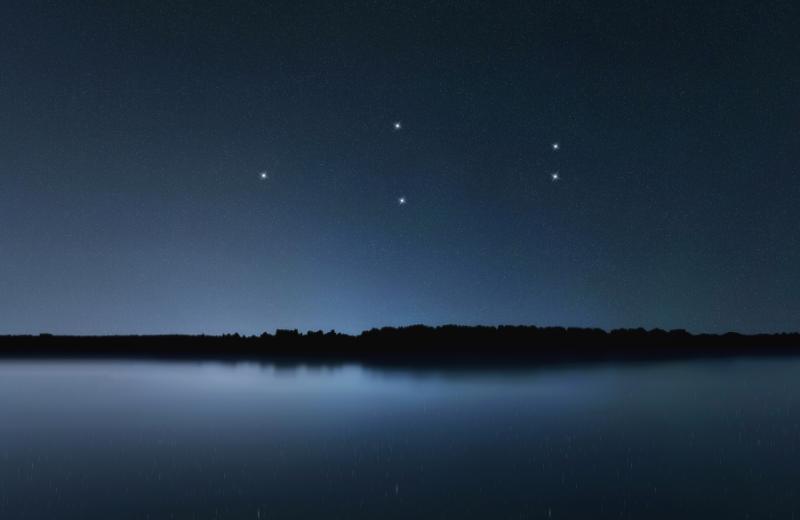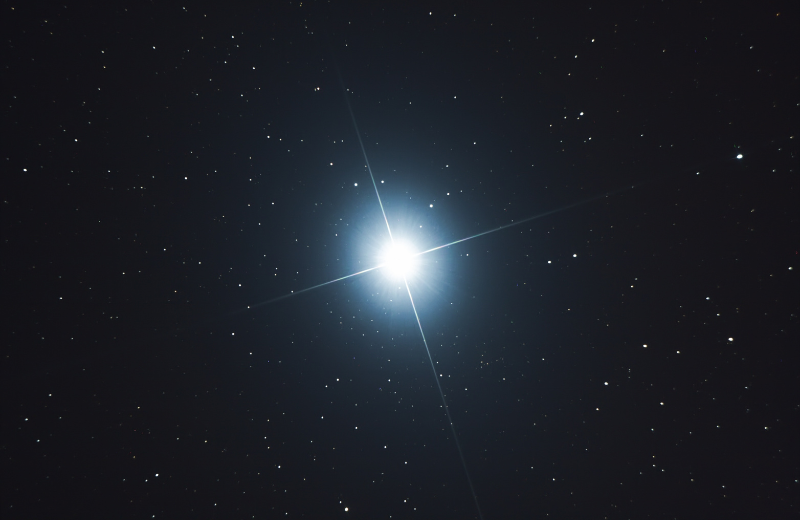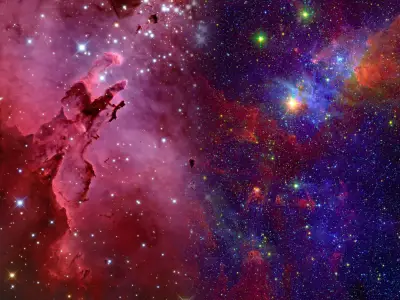When you look up at the night sky, there’s something truly captivating about the constellations that have been recognised for thousands of years. Among these stellar wonders, the Chamaeleon constellation is a hidden gem, especially for those curious about the lesser-known formations.
Its subtlety in the southern sky makes it a fascinating subject for stargazers and astronomy enthusiasts alike. This guide explores the Chamaeleon constellation, its stars, and the myths behind it.
Jump to:
Recommended for you!
Best SellersWhat is the Chamaeleon Constellation?
The Chamaeleon constellation is one of the 88 modern constellations recognised by the International Astronomical Union. It’s named after the chameleon, a small lizard known for its ability to change colour. The constellation lies in the far southern hemisphere and is relatively faint, making it a challenge to observe from many parts of the world.
What Does Chamaeleon Look Like?
If you’re lucky enough to be in the southern hemisphere, you can spot the Chamaeleon constellation without the need for a telescope. It’s made up of a handful of stars that form a vaguely triangular shape, mimicking the body of a chameleon. While it’s not as visually striking as constellations like Orion or Cassiopeia, Chamaeleon holds its own charm with its subtle elegance.
For those searching for it, Chamaeleon can be found near the constellations of Musca and Carina. Its position near the southern celestial pole means it’s circumpolar, meaning it never sets for observers in the southern hemisphere.
The Chamaeleon Constellation Myth

Like many constellations, Chamaeleon has a story behind its name, though it’s less steeped in ancient mythology than some of the better-known constellations. Chamaeleon was one of the twelve constellations created by Dutch navigators Pieter Dirkszoon Keyser and Frederick de Houtman in the late 16th century. These explorers charted the skies of the southern hemisphere during their voyages, and Chamaeleon was one of the new constellations added to maps of the time.
Unlike constellations based on Greek myths, Chamaeleon doesn’t have an associated legend from antiquity. Instead, its name reflects the chameleon’s distinctive ability to adapt and blend into its surroundings—an apt metaphor for the constellation itself, which often blends into the southern sky’s background.
What is the Meaning of the Chamaeleon Constellation?
The meaning behind the Chamaeleon constellation is largely tied to the characteristics of its namesake animal. Just as chameleons are masters of camouflage, this constellation remains relatively inconspicuous unless you know where to look.
In the broader sense of astronomy, constellations like Chamaeleon are named to help map the sky and provide reference points for astronomers. Chamaeleon is one of several constellations named after animals, forming part of a celestial menagerie that includes the nearby constellations of Musca (the fly) and Volans (the flying fish).
Chamaeleon's Stars

Now, let’s explore the stars that make up the Chamaeleon constellation. Although none of its stars are particularly bright, they still form an interesting and coherent pattern. The constellation’s main stars include Alpha Chamaeleontis, Beta Chamaeleontis, and Gamma Chamaeleontis.
- Alpha Chamaeleontis: The brightest star in the constellation, Alpha Chamaeleontis is a white subgiant located about 63 light-years from Earth.
- Beta Chamaeleontis: This star, slightly fainter than Alpha, is also located in the southern region of the sky and is around 270 light-years away.
- Gamma Chamaeleontis: Gamma is a red giant, and although it isn’t as bright as Alpha, it adds variety to the constellation’s star composition.
Additional stars in the Chamaeleon constellation:
- Delta Chamaeleontis: A binary star system located approximately 350 light-years from Earth.
- Epsilon Chamaeleontis: A member of the open cluster in Chamaeleon, located around 114 light-years away.
- Theta Chamaeleontis: Another faint star within the constellation, positioned roughly 195 light-years from Earth.
- Zeta Chamaeleontis: A variable star that can change in brightness, located about 370 light-years away.
- Eta Chamaeleontis: Part of a young stellar association, located roughly 316 light-years from Earth.
Altogether, Chamaeleon contains around 50 stars visible to the naked eye under good conditions. It’s home to many faint stars, making it a fascinating constellation for those with a telescope and a bit of patience.
Nebulae in the Chamaeleon Constellation
One of the hidden treasures within the Chamaeleon constellation is its proximity to several dark nebulae. These nebulae, known as the Chamaeleon Molecular Clouds, are regions of dense gas and dust where new stars are being born. The Chamaeleon clouds are an active area of star formation, and they’ve been studied extensively by astronomers interested in the early stages of stellar development.
While these nebulae aren’t visible to the naked eye, they are a key reason why Chamaeleon is significant in the study of the universe. The nebulae’s complex structure and rich gas content make them a prime location for observing how stars evolve from clouds of gas into full-fledged celestial bodies.
Finding Chamaeleon in the Sky

Chamaeleon is best viewed from the southern hemisphere, making it a rewarding find for stargazers in places like Australia, New Zealand, South Africa, and parts of South America. Its circumpolar nature means it’s visible throughout the year for those south of the equator. However, those in the northern hemisphere won't be able to observe it due to its southern location.
Locating Chamaeleon
To locate Chamaeleon, start by identifying the southern celestial pole. While Chamaeleon doesn’t have any particularly bright stars, it lies close to the pole, near the constellations Musca and Carina. These neighbouring constellations can serve as useful reference points when scanning the sky for Chamaeleon’s faint stars.
Viewing Chamaeleon with Binoculars or a Telescope
- With Binoculars: Although Chamaeleon’s stars are faint, binoculars can help you pick out the constellation’s subtle shape in the southern sky.
- With a Telescope: A telescope will reveal more detail, allowing you to observe some of the faint stars and nebulae associated with this constellation, such as the Chamaeleon Molecular Clouds.
The Best Viewing Times
You can observe Chamaeleon at any time of the year if you’re in the southern hemisphere. For the best experience, choose a clear, dark night away from city lights, and allow your eyes to adjust to the darkness to fully appreciate the constellation’s subtle beauty.
Recommended for you!
Best SellersFun Facts About Chamaeleon
- Size: Chamaeleon ranks 79th in size among the 88 constellations, covering 132 square degrees of the sky.
- Circumpolar: Chamaeleon is a circumpolar constellation, meaning it never sets for observers in the southern hemisphere.
- No bright stars: Unlike Orion or Scorpio, Chamaeleon doesn’t have any first-magnitude stars, making it a constellation that’s often overlooked by casual stargazers.
- Star formation: The Chamaeleon Molecular Clouds are one of the most active star-forming regions in the southern sky, offering a rich field of study for astronomers.
- Named by explorers: The constellation was named by Dutch navigators in the late 16th century during their explorations of the southern hemisphere.
Study Astronomy for £29
The Chamaeleon constellation is a stunning and significant part of the night sky, offering beauty and rich mythology. If you're inspired to delve deeper into the wonders of astronomy, why not explore the Astronomy Diploma Course with Centre of Excellence? Whether you're a beginner or someone with more experience, this course will guide you through everything you need to know about the stars, constellations, and galaxies like Chamaeleon. And for a limited time, you can enrol for just £29!













